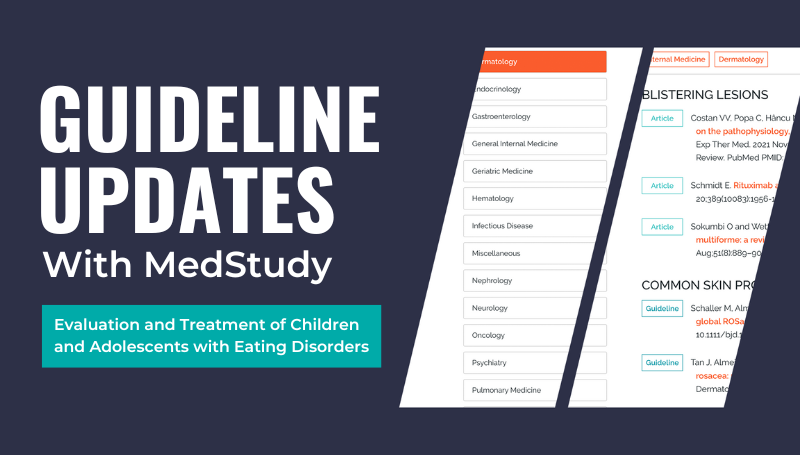Guideline Updates with MedStudy | Evaluation and Treatment of Children and Adolescents with Eating Disorders

Paul Catalana, MD, of the University of South Carolina School of Medicine at Greenville, explains the latest update regarding the evaluation and treatment of children and adolescents with eating disorders.
First, he walks us through some of the changes including:
- Anorexia nervosa in the DSM-5 criteria no longer includes amenorrhea nor does it include the use of specific weight percentiles.
- An individual meets criteria for bulimia nervosa if that individual has had at least one binging and purging episode per week during the previous three months.
- The term “Eating Disorder Not Otherwise Specified” has been dropped and replaced by the term “Other Specified Feeding and Eating Disorder.”
- “Female Athletic Triad” has been replaced by the term “Relative Energy Deficiency In Sport.”
- Newer categories of eating disorders are:
-
- Binge Eating Disorder
- Avoidant Restrictive Food Eating Disorder
These updates were made because of the most recent data findings. For example, about 0.3% of individuals are impacted by Anorexia Nervosa, about 0.9% by Bulimia Nervosa, and anywhere from 1.6% to up to 4% impacted by Binge Eating Disorder—making Binge Eating Disorder the most common type of eating disorder—and another 2-2.5% of individuals have disordered eating that do not yet fit into a particular DSM-5 criteria.
Dr. Catalana explains the most recent data and consequential guideline update:
The latest update addressing the evaluation and treatment of children and adolescents with eating disorders
How will this update change your decision making?
These updated changes and definitions are important to keep in mind as you evaluate patients—completing a detailed physical exam and review of systems. Remember: A review of systems should include a “Home Education Activities Drugs Sexual Practices and Suicidality” (HEADSPS) evaluation.
Also, as Dr. Catalana reminds us in the video, take a careful look at vital signs and other acute medical problems just in case they prompt hospitalization.
So for everyday practice, keep in mind:
- The changes in definition of eating disorders
- The addition of other categories of eating disorders
- The changes in the prevalence of eating disorders to include many more individuals from different backgrounds than was originally thought
Finally, consider the mental health well-being as well as the physical well-being of the individual. Then weigh the benefits of hospitalization versus intensive outpatient treatment for them.
Want more explanations of new guidelines? Check out the MedStudy Hub!


